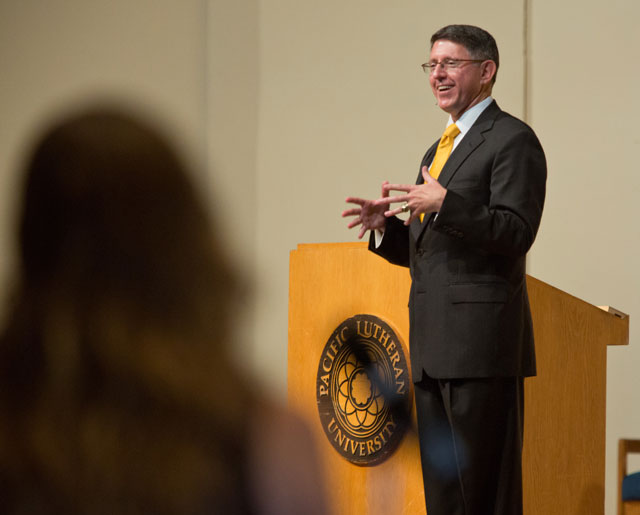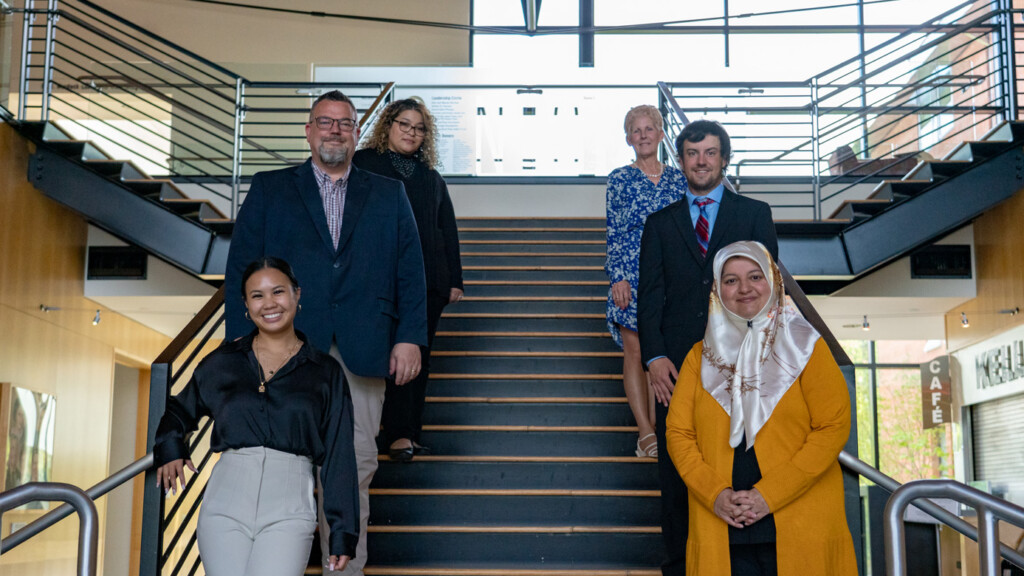Page 39 • (417 results in 0.045 seconds)
-
151. Techniques and applications of integrals, improper integrals, ordinary differential equations and power series, with applications. Prerequisite: MATH 151. (4) MATH 203 : History of Mathematics A study in the vast adventure of ideas that is mathematics from ancient cultures to the 20th Century. The evolution of the concepts of number, measurement, demonstration, and the various branches of mathematics in the contexts of the varied cultures in which they arose. Prerequisite: MATH 152 or consent
-
attraction.” Read review online. Textura.org | March 2020 “If there’s singing in heaven, Ešenvalds’ music is probably the closest earthly approximation to it.” Read review online. BBC Music Magazine | March 2020 ⭐⭐⭐ “The Choir shines when singing as an ensemble, bringing out Ešenvalds’s clever vocal techniques superbly.” MusicWeb International | March 2020 “The Pacific Lutheran University Choir of the West is an accomplished ensemble and they have an evident affinity for the music of this composer. All
-
from across the Western Hemisphere at the annual Cascade Conducting Workshop in Tacoma, WA. As a true collaborative artist known for her deep insight and “getting inside the conductor’s head,” Amy provides feedback through the special lens of accompanist, singer and conductor combined. She has led pedagogical workshops for choral conductors and collaborative artists regionally and in Canada. Her recent session “The Power of Two” focused on collaborative rehearsal techniques to develop between
-

have known PLU for a long time, we don’t need a primer on what it is and what it stands for. But many people do and we must provide it. Positioned for the Future As everyone here knows, PLU doesn’t exist in a vacuum, and the challenges we face as an institution are varied and potentially daunting. The cost of higher education keeps rising, the general economy remains fragile, public support for higher education is declining, and other countries are matching or exceeding us in many measures of
-
important information regarding deadlines and tuition. Due to the scarcity of this data and lack of availability by scraping techniques, we gave the user the ability to contribute to the given data by submitting a request form to add to or alter the data the is currently being displayed to them. In addition, the user can create save their favorite schools and programs, and keep track of important application deadlines through Google calendar.Saturday, May 5th9:00am – AI in Geoscience: Blur detection in
-
students with techniques of literary analysis, as applied to examples of narrative, poetry, drama, and essay in the Spanish and Latin American literary traditions. Reading, writing, and speaking-intensive. Ongoing review of advanced grammar. Prerequisite: HISP 300, HISP 301 or 351, or permission of instructor. (4) HISP 331 : Intensive Spanish Language and Culture (Study Away) - VW, GE An intensive Spanish course offered in a Spanish speaking country and geared to students at the 300-level. Course
-
): ECON 101: Principles of Microeconomics Business principles (4 credits from the following): BUSA 201: Introduction to Business in a Global Environment Design and Communication principles (4 credits from the following): ARTD 110: Graphic Design 1- An introduction to design through the study of basic techniques, color theory, and composition. COMA 215: Writing in Communication Careers- Introduces students to the fundamental standards and expectations in communication writing. 3) Elective Four Semester
-
151 : Calculus I - MR, NS Functions, limits, derivatives, the fundamental theorem of calculus, and an introduction to integrals with applications. Emphasis on derivatives. Prerequisite: MATH 140 or PLU Math Placement into MATH 151. (4) MATH 152 : Calculus II - MR, NS Continuation of MATH 151. Techniques and applications of integrals, improper integrals, ordinary differential equations and power series, with applications. Prerequisite: MATH 151. (4) MATH 203 : History of Mathematics - NS A study in
-

which Andrews has been actively involved. Upon completion of a series of illustrations for this project, Stasinos and Andrews discussed this unique collaboration of art and archeology. Q: Professor Stasinos, tell me a little bit about your art background and how you and Professor Andrews got connected with each other. Stasinos: I graduated from the New York Academy of the Figure of Art. I was interested in the figure and learning about historical and traditional painting techniques. I was there more
-

just doing that,” Nargesi continues. “We’re not training people to go be successful workers. We are trying to raise a generation of business people that care, who see the big picture and who are able to be problem solvers at an integrated level. Not just workers who repeat quantitative techniques.”That perspective rings true to business and sociology double major Allisa Ouanesisouk ’21. “My classes had the perfect balance of learning about how businesses are run and how to make the most ethical
Do you have any feedback for us? If so, feel free to use our Feedback Form.


